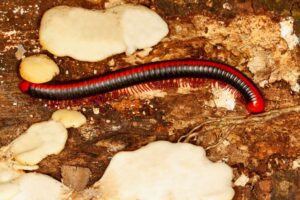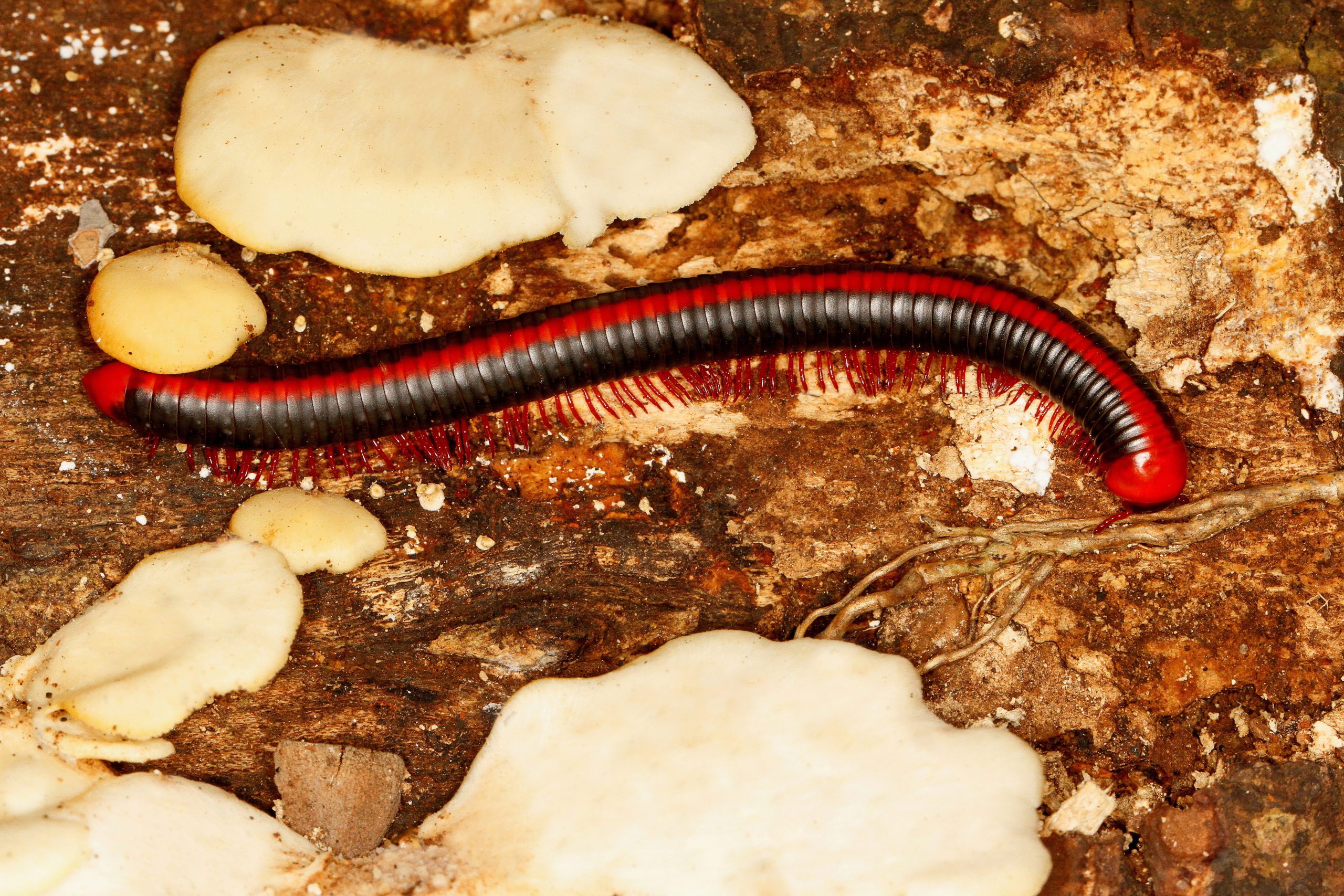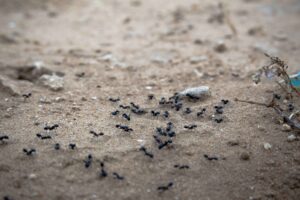 Millipedes, the multiple-legged creatures that venture out at night, are never a fun surprise to find in or around your home. These pests can often be found in damp or dark places such as closets, attics, basements, or garages. Millipedes need moisture to survive and will move from place to place in search of moisture and food sources. These creatures can be black, brown, red, or orange in color and are a nuisance but not dangerous. In some instances, direct contact with skin can cause irritation, or millipedes can cause irritation to pets, but that’s about all. Still, it is not a problem businesses or homeowners in Georgia want to have. These top millipede prevention tips can minimize millipede infestation and ensure they don’t take up residence in your space.
Millipedes, the multiple-legged creatures that venture out at night, are never a fun surprise to find in or around your home. These pests can often be found in damp or dark places such as closets, attics, basements, or garages. Millipedes need moisture to survive and will move from place to place in search of moisture and food sources. These creatures can be black, brown, red, or orange in color and are a nuisance but not dangerous. In some instances, direct contact with skin can cause irritation, or millipedes can cause irritation to pets, but that’s about all. Still, it is not a problem businesses or homeowners in Georgia want to have. These top millipede prevention tips can minimize millipede infestation and ensure they don’t take up residence in your space.
Moisture Levels
Moisture is a necessity for millipedes. If you have a millipede infestation, chances are you also have a moisture problem. Luckily, reducing the moisture levels can also reduce the likelihood that millipedes will want to make your home their home too. A dehumidifier in damp spaces such as basements is a great way to keep moisture levels low. Proper ventilation inside an area of moisture can also reduce the moisture in the air.
Check crawl spaces for high moisture and make sure buildings have proper downspouts and drainage. Add sump pumps or polyethylene soil covers to remove moisture from basements. There are many options to remove moisture from spaces, and this should be a top priority as it is the highest contributing factor to millipede survival.
Clean Up
Another reason millipedes are attracted to certain spaces is because of ideal hiding spaces. Lots of garbage or debris is an attractive home for millipedes. Get rid of decay, which is part of a millipede diet, and you will remove a food source for millipedes. Be sure any and all trash cans are secured with lids or all garbage is sealed to keep millipedes from hanging around. Debris around the yard should also be cleaned up. Remove leaf piles or firewood logs that can be an attractive place to live for millipedes. If millipedes take up residence in your yard, it’s only a matter of time before they find their way into inside spaces, so be sure to keep the outside areas cleaned up to discourage attracting millipedes.
Address Leaks or Water Damage
Adding to moisture level problems, water leaks can cause these levels to rise. Again, this makes a space ideal for millipede living. Fix any leaky pipes to prevent added moisture and replace damaged wood from leaks that could continue to provide ideal living conditions for millipedes.
Contact Expert Pest Exterminators
While you could do your very best to eliminate the presence of millipedes, sometimes it may just not be enough. To eliminate these unwanted pests once and for all, it’s best to work with a local Georgia pest exterminator that is an expert at how to eliminate millipedes and keep them out for good. Pest experts at Pest Force will identify problem areas and treat the millipede problem in a safe and efficient way to ensure millipedes stay away.
For more information about millipede removal, contact Pest Force today to schedule a consultation.
FAQs About Millipedes
What Is the Difference Between Millipedes and Centipedes?
Millipedes and Centipedes are not technically insects. They are more closely related to species such as crayfish. If you have seen something like a millipede or centipede in your home, you may wonder which one it is. They are both made up of segments along the body with many wiggly legs.
But upon closer look, millipedes will have two sets of legs per segment while centipedes will only have one. If threatened, millipedes will usually coil up, while centipedes can bite, although it is harmless to humans. Centipedes have flatter bodies, while millipedes are rounder. It can be tough to differentiate between the two just with a quick look. For a more expert opinion, turn to professional exterminators.
How Do Millipedes Protect Themselves?
Millipedes are not fast and can’t get away quickly. They also are not able to bite. So, to defend themselves, they will curl up and release a toxin, or smelly substance, that wards off any predators. Some types of millipedes are even capable of spraying this substance at their predators. To humans, the toxin is not deadly, but it can cause a rash and mild discomfort.
When Do Millipedes Come Out?
There is no specific millipede season, but millipedes do migrate twice a year, meaning you may see them more often during this time. They will migrate once in the spring and once in the fall. Usually, migration occurs during the night, especially on nights that are warm and humid. Millipedes are usually outside creatures. If you find one inside your home, it could mean it just wandered there by accident. Should millipedes become a pest problem, be sure to reach out to Pest Force for help.



